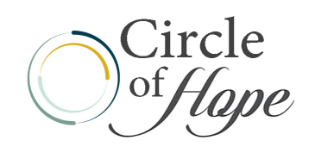What is the DBT House Model?
Dialectical behavior therapy or DBT is a form of cognitive-behavioral therapy that teaches a variety of skills to people struggling with mental health disorders including substance use disorders.
It is becoming more and more prevalent especially as a way to help alcoholics and addicts who also have mental health and behavioral problems.
The DBT House of Treatment Model consists of four levels which are analogous to the basement, first floor, second floor, and roof of a house. As the person’s goals and behaviors change, they move through the different stages of treatment.
The DBT House visualization can be very helpful for people in recovery. If you or a loved one struggles with substance abuse or other destructive behaviors, you may be interested in learning more about this type of treatment.
Level 1: The Basement
The first of the DBT House stages is the basement. It is also referred to as “hell”. If you or a loved one is repeatedly participating in major life-threatening behaviors, they are in this stage.
They may be severely addicted to alcohol or drugs, self-harming, or attempting suicide. A person who is in this stage is in constant distress and the pain is so much that they can’t cope with everyday life.
While no one wants to be in “hell”, people who have severe substance abuse problems often feel like they’re stuck. Especially at this stage, they need to be treated in a residential facility with supervision around the clock.
Impatient treatment is centered around stabilizing the individual and eliminating behaviors that are life-threatening and at odds with treatment. Crisis management is key here.
As people attempt to go up to the stairs to leave the ‘basement,’ they encounter pain and some fall back down. However, this is all part of the process.
Level 2: The First Floor

The second of the DBT House stages is called the first floor. On this level, the person is still suffering but they are no longer engaging in chronically life-threatening behaviors.
Still, they need a lot of help with regulating their emotions. Therefore, therapy during this stage is focused on emotional stability.
Here the DBT practitioner learns how to increase their emotional self-awareness, form new, positive thinking patterns, and become more comfortable with themselves. If they are dealing with trauma or post-traumatic stress disorder, they gain tools for recovery from these as well.
During this stage, therapists focus on reducing and eventually eliminating behaviors that can interfere with treatment. These behaviors include refusing to see the therapist or not doing what the therapist recommends.
These responses are often due to the anxiety experienced when giving up substance abuse, self-harm, or other negative behaviors.
Level 3: The Second Floor
By the time you’ve reached the second floor, you’ve learned a lot more about the skills that dialectical behavior therapy teaches. Here the focus will turn to using those skills to cope with the issues encountered on a daily basis.
In this stage, people learn to identify their values and they practice positive thinking patterns and behaviors. They may no longer be in residential treatment.
Instead, they may be living at home again and going about their lives as usual. However, they should still access professional help with managing their emotions and achieving their goals.
During this stage, the client may have problems connecting with other people and forming relationships. They may be anxious about getting close to people.
However, they can use the skills they’ve learned to help them in growing relationships and forming bonds. These skills include emotion regulation, mindfulness, and interpersonal effectiveness.
Level 4: The Roof
In the ‘DBT House’ of therapy, the roof refers to life after leaving structured treatment. Even after intensive inpatient and outpatient treatment, people with a newfound DBT practice should continue to use their new skills to seek out fulfilling opportunities and find happiness.
If you think about it, the roof of a house is exposed to both the sun and rain. Similarly, all people will experience both joy and sadness.
They will encounter victories and losses, and eventually learn that both can co-exist and that no one needs to go back to self-destructive behaviors like substance abuse to find relief. Whenever obstacles come up, they should be better able to cope with them.
Going on the roof is also symbolic of having a new perspective on life and being able to appreciate the view once you’ve reached this stage. People on this level have compassion for self and they’re better able to build relationships with others.
DBT House Model Activities

Therapy using the DBT House model will likely include several activities. One of them may be to physically draw a house that features a foundation, walls, a door, a roof, and a chimney. The practitioner will list a variety of things on each of these elements.
For example, they will be encouraged to see the foundation of the house as their foundation as a person. This will include things like values, beliefs, and priorities.
The walls will represent supporting people such as therapists, parents, and other people, places, and things that provide assistance.
The door is designed to keep others out and keep certain things hidden. The DBT client should, therefore, list the things they are ashamed of or things they want to hide on the door.
The chimney is designed to release hot air. This is where people will be asked to share the things that they do to relax or blow off steam.
Maybe that’s playing a sport, watching television, or writing in a journal. Individuals are free to get creative and they can add other elements to the home if they so choose.
Get Help Using DBT from Circle of Hope
Our luxury rehab center offers a wide variety of drug treatment and alcohol treatment options that allow us to cater to the unique needs of each person. Among the options is DBT.
If your loved one is abusing drugs and you want further DBT House resources, don’t delay in contacting us. Sobriety is always possible even when a person has a severe addiction. We’re here to help, so call us today!

